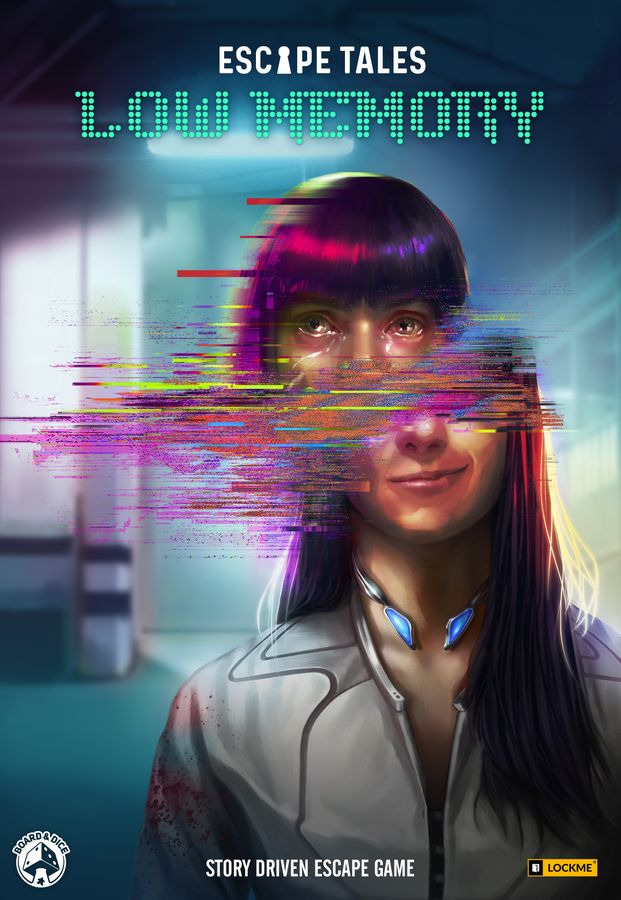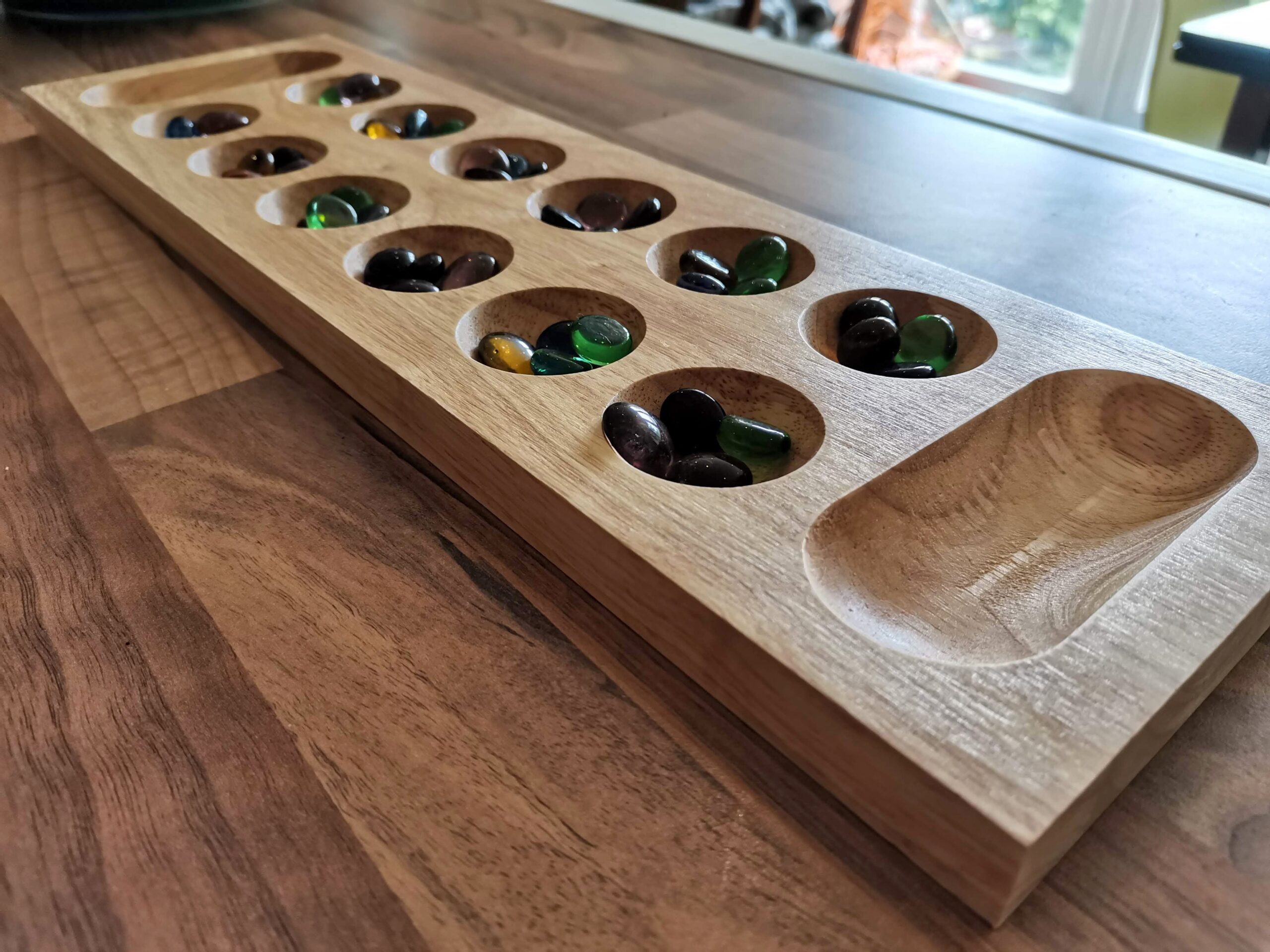Escape Tales: Low Memory Review

Low Memory is the second game in the Escape Tales series from Board&Dice. It eschews the paranormal setting of its predecessor – The Awakening – and takes us into the near future. It’s another escape room game from the developers, Lockme, and does things in a similar way to the previous game, revolving around cards and story books. Three stories. One overarching narrative. Let’s get into it.
If this is the first Escape Tales review you’ve read here, I suggest jumping back to read my review of The Awakening first. The mechanisms and the way the game works in Low Memory is nearly identical. The biggest change is the way the story is split into three interwoven stories, each with its own book. It’s a nice change of direction, as it gives you a natural point to stop, save, and have something fresh to come back to the next time you play.
Once again, the game is drive by the same website-pretending-to-be-an-app, and it works well on all the devices I tried it with.
Techno, techno, techno
While the first game was set in a slightly paranormal space, with magical incantations and portals, Low Memory has gone for the archetypal Future setting. You can tell, because the art is full of screens and sweeping curves, and the puzzle numbers in the app are meant to look like hexadecimal values, and have a bitmap-style font. It’s a nice change of direction, and it got me excited to see where they might go with it.
Unfortunately, the theme feels a bit pasted-on for most of the game. Things do get a bit more interesting in the third book, which ties the first two together, but up until that point you honestly could have put the puzzles in any setting and not have noticed it was meant to be futuristic. You might be reading this and thinking I sound a bit down on the game already, and in all honesty, you’re probably right. I had high hopes when I tore the shrinkwrap off the box, because I really enjoyed The Awakening.

The good…
Low Memory does a few things really nicely. Moving from location to location feels better implemented than in The Awakening, which felt more like ping-ponging back and forth in the same rooms for most of it. I like the fact there are areas that you don’t get paragraph numbers for until you’ve managed to gain access to that part of the map card.
I also like the story, which is really nicely done. My trouble with a lot of games, especially escape-style games, is that I like to bounce from puzzle to puzzle, solving them as fast as I can. I’m pretty competitive in most things, and I think that’s just more of the same. You shouldn’t try to speedrun your games like I do sometimes. If you can absorb the flavour text and story in Low Memory, you’ll find yourself absorbed in a really interesting adventure. The connections between the first two books grow, the further in you get, and it’s cool the way the second book loops back over events you’ve already been a part of.
…and the not-so-good
Unfortunately, there were few bits of the game I didn’t enjoy nearly as much as the first one. I won’t reveal anything here that’ll spoil the game for you, but I’ll touch on a couple of things. The most annoying thing that happened to me was spending ages working on a puzzle, only for the game to tell me “You shouldn’t have wasted your time doing that, nothing productive happened”. It was like the makers were smirking at me going “OMG can you believe he fell for it!? What a moron”. Luckily I’ve not experienced that same thing since, as it was a big turn-off for me.
Some of the puzzles defied logic a bit. I mean, I know that’s always going to be a bit of lateral thinking and tangential puzzles in an escape room, but there were times when it was a bit too far. One of the puzzles involved a dart board, with darts in certain scores and even using the double and triple ring. I had to take a hint from the app for this one, and it gleefully told me “It’s nothing to do with actual darts or darts scoring”, which frustrated me. Maybe I was just feeling rubbed-up the wrong way after the time-waster puzzle, I don’t know.
Some of the puzzles were hard for the sake of being hard. I love a puzzle, I love logic problems, mystery, thinking laterally. But there were some in here that felt like they were intentionally convoluted. You should be able to play these games with a piece of paper and a pencil, but there were times that felt insufficient. Later in the game there’s a big puzzle, which I did enjoy, but only because I know how a logic grid works, and how to make one. Without that knowledge, I think I’d have been tearing my hair out.
Final thoughts
If you’ve read this far, you’d be forgiven for thinking I didn’t like Low Memory. I can see why, but I want to make the point that it’s not a bad game. Far from it, it’s a good game, with fiendish puzzles, that puzzle fans will love. I’m coming at it from a holistic point of view though, and with an eye on how it fits in with the setting of the game, how the story progresses, and how the puzzles tie-in with that story.
If I’d played this game before I played The Awakening, I’m not sure I’d have been as down on some of the puzzles as I have been. I think playing them in this order spoiled me a bit, because The Awakening was just a bit more cohesive. Some of the puzzles in Low Memory felt like they were maybe ideas that were first thought of when making The Awakening, but got left on the cutting room floor.
It’s a very long game, and that’s neither a positive nor a negative, it just depends if you want a short or long game. The box reckons each of the three stories will take you around three hours, and that’s not far from the truth. If you’re after a brain-melter of an escape room game, Low Memory is a good game. Not a great game, but certainly not a bad one. If you’re fresh to the series, or are coming from the Exit or Unlock series, I’d probably go for The Awakening first, but this is definitely worth picking up at some point to get your puzzle fix.
A review copy of the game was kindly provided to me by Board&Dice. Thoughts and opinions are my own.

Escape Tales: Low Memory (2019)
Designers: Jakub Caban, Bartosz Idzikowski
Publisher: Board&Dice
Art: Jakub Fajtanowski, Magdalena Klepacz
Players: 1-4
Playing time: 3 x 180 mins











